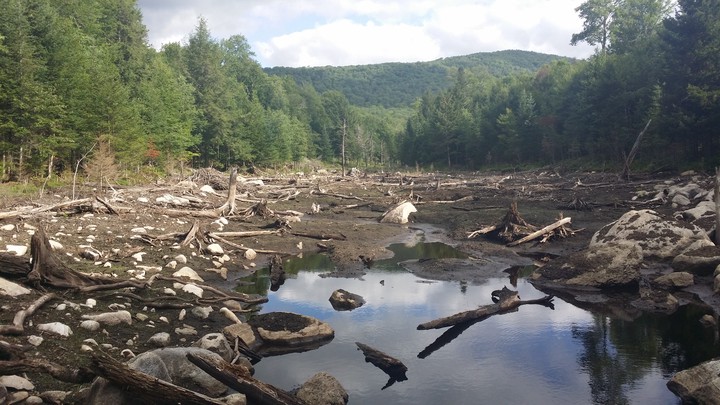Beaver Foraging Preferences and Impacts on Forest Structure in New York's Adirondack Mountains
 The remnants of a beaver impoundment in the southern Adirondacks.
The remnants of a beaver impoundment in the southern Adirondacks.Abstract
Beavers (Castor canadensis) are ecosystem engineers, causing changes at the landscape level due to a combination of their damming and foraging behaviors. As beaver dam streams, create ponds, and maintain canopy openings, the comprehensive impacts of beaver constitute a rare source of ongoing disturbance in the forests of northeastern North America. Though the behaviors and impacts of beaver on riparian communities have been well studied in several forest regions, they are poorly understood within forests of the northeastern United States, where beaver populations are still rebounding following regional extirpation. Given the unique composition, management history, and disturbance regimes of forests within this region, there is a need for new research to quantify impacts in this region and to compare beaver foraging preferences and disturbance impacts to other regions. I conducted field surveys at 19 beaver sites throughout New York’s Adirondack State Park to assess beaver foraging preferences and the impacts of beaver activity on forest structure and composition. Beavers preferentially harvested stems between 2 and 10 centimeters, with the 2 to 5 centimeter size class most preferred overall. Deciduous tree species were preferentially harvested, with typically disfavored species such as American beech (Fagus grandifolia) harvested at higher rates than in studies from other regions. Logistic regression models showed clear foraging preferences for stems closer to the impoundment of intermediate sizes for all modeled groupings and species. Impacts on forest structure generally resembled those found in other regions, while preferred species differed greatly. Understanding the impacts beavers will have on forests in the Northeast is crucially important as beaver continue to recolonize their historic range, creating new management challenges and opportunities in years to come.